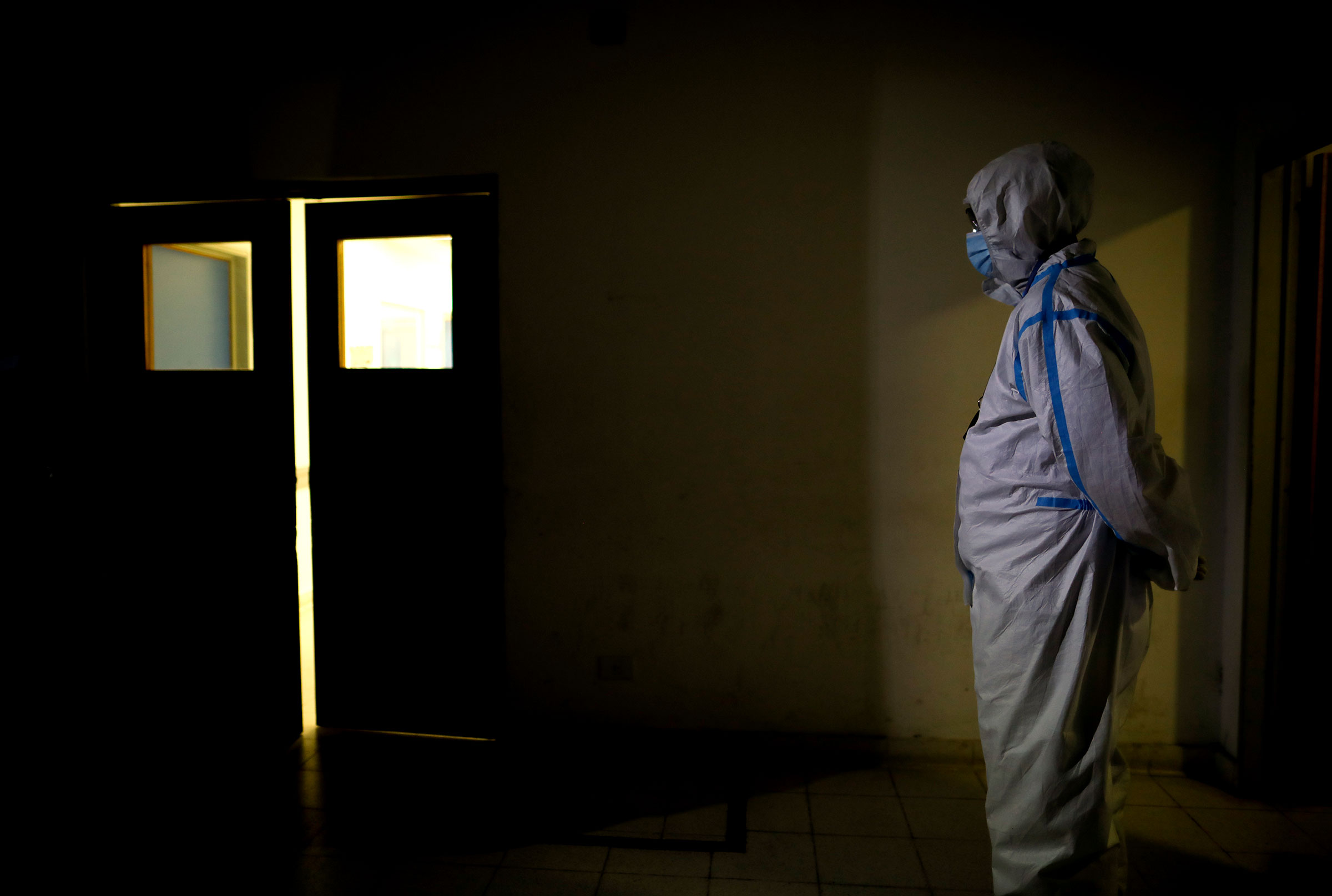
As the United States seems close to controlling a pandemic that has killed 600,000 Americans, we must recognize that in much of the rest of the world, the pandemic continues to rage.
Now, with the U.S. vaccine supply far outstripping our domestic needs, the U.S. is taking action, with President Biden’s announcement of the first major global distribution of American vaccine doses. But there are billions of vulnerable people around the world, and at current vaccination rates many will be waiting a long time for a shot.
Health care workers around the globe should not be left waiting. As its first major global vaccination intervention, the U.S. should aim to vaccinate the world’s health care workers, urgently exporting doses both to the Gavi, World Health Organization and Coalition for Epidemic Preparedness Innovations’ COVAX facility and, through bilateral partnerships, to other nations.
There are moral, humanitarian and practical reasons for focusing on health care workers. First, the moral reasons: These workers are highly exposed to infection, particularly during viral surges; unlike most other work, there is little these workers can do to reduce their exposure to people actively sick with COVID-19. In fact, while other front-line workers do face risks, health care workers spend all their days with patients with this disease. With high-quality PPE and rapid diagnostics in short supply, these workers face some of the highest risks of getting infected, getting sick and dying. Across the world, more than 115,000 health care workers have died from COVID-19 and millions have been sickened by the disease. They deserve, for moral reasons alone, our strongest protection.
Second, there are humanitarian reasons that affect entire populations. When health care workers get sick and die, health systems break down, undermining the capacity to treat not just COVID-19 but any disease, dramatically increasing bad outcomes for everyone, including children. The health of everyone depends on the ability of health care workers to do their jobs. Once a health system is strained with a lack of health care workers, the ability of the system to do the basics – care for people with common conditions, help women deliver babies, or manage patients’ chronic conditions – begins to collapse. Everyone’s suffering rises exponentially, not just those with COVID-19.
And the health threat posed by COVID-19 infections in health care workers has long-term implications. Ebola outbreaks in West Africa exacted a terrible cost on the health care workforce, undermining health of the people of those nations for a generation. Indeed, when other things are in short supply in health care, such as medicines or oxygen, they can be replenished relatively quickly. The loss of health care workers takes a generation or even longer to replenish. The costs on society in terms of poor health will last for decades.
Finally, there are just plain practical reasons. This is a group that the U.S. alone can vaccinate in the upcoming weeks, if not months. The World Bank conservatively estimates that there are 50 million health care workers in the world, while the WHO counts millions more. Many of them have already been vaccinated (as in the U.S., the U.K and Israel) and others will be soon (as in the E.U., Russia and China). This likely leaves 30 to 40 million health care workers outside these countries that are vulnerable. We have more than enough vaccines to immunize this group immediately. And unlike other high-risk groups, where there is some disagreement about who exactly is high risk, front-line health care workers are relatively easy to identify, allowing us to move efficiently.
Read more: Inside the Facilities Making the World’s Most Prevalent COVID-19 Vaccine
The U.S. should announce it will ensure that every health care worker in the world will be able to get their first shot within the next month. For countries where we have strong relationships, we can work with their ministries of health to identify and vaccinate front-line health care workers. For others, we could work with WHO and its facility COVAX. WHO has already prioritized health care workers in its public approach, although they often lump them in with other high-risk groups, which balloons the number of eligible people to more than 1 billion. The key here is to keep it simple: focus on front-line health care workers and work with WHO to get vaccines distributed and into the arms of health care workers.
Does the U.S. really have this many doses to spare? Absolutely. The US is getting around 20 million doses of vaccines every week from its contracts – and using about 10 million. More important, it has 72 million doses already distributed to states. The U.S. will easily have more than 100 million more doses than it can use by the end of June. If we start sending vaccine doses now, not a single American will be denied a dose if they want one.
Time is of the essence. The variants are spreading and infecting health care workers around the world. The costs to these workers is immense, and the costs to those societies is even higher. The United States has the capacity to transform the dynamics of infection without jeopardizing its own recovery; the only question is whether we have the courage and will to show this kind of global leadership. My colleagues in India, Argentina and elsewhere – and their patients – hope that we do.
More Must-Reads From TIME
- The 100 Most Influential People of 2024
- The Revolution of Yulia Navalnaya
- 6 Compliments That Land Every Time
- What's the Deal With the Bitcoin Halving?
- If You're Dating Right Now , You're Brave: Column
- The AI That Could Heal a Divided Internet
- Fallout Is a Brilliant Model for the Future of Video Game Adaptations
- Want Weekly Recs on What to Watch, Read, and More? Sign Up for Worth Your Time
Contact us at letters@time.com